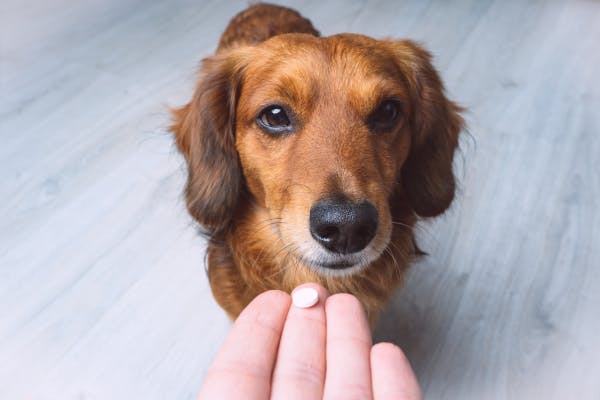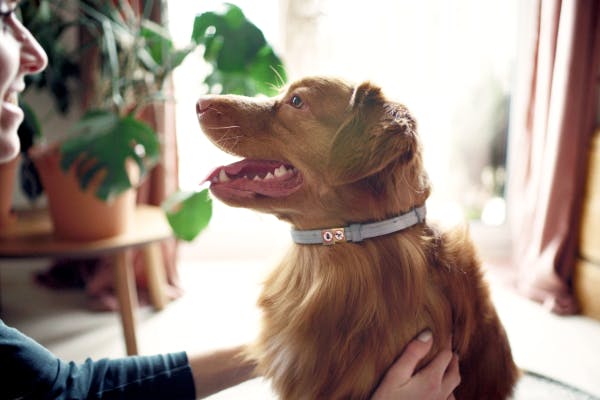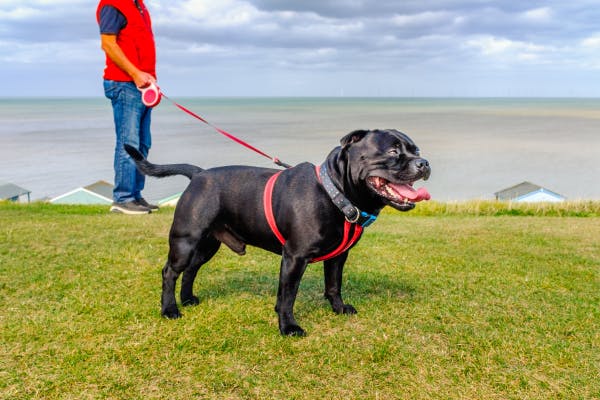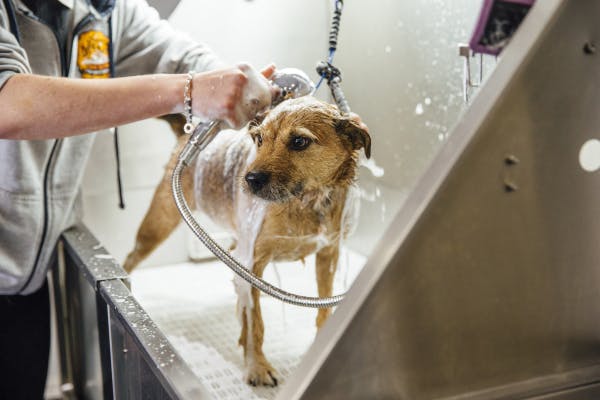learn about retractable dog gates
Creating Safe Spaces: How Retractable Dog Gates Keep Your Pet Secure
Learn how retractable dog gates keep pets safe and secure by limiting access to dangerous items, separating them from others, and establishing boundaries.

- The Significance of Dog Safety and Retractable Dog Gates
- Advantages of Using Retractable Dog Gates at Home
- Where to Use Retractable Dog Gates
- Deciding Between Retractable and Traditional Fixed Gates
- Choosing the Right Retractable Dog Gate: Size, Height, and Other Factors
- Installing Retractable Dog Gates: Tips for Different Locations
- Successfully Introducing Your Pet to a New Retractable Dog Gate
The Significance of Dog Safety and Retractable Dog Gates
As a responsible pet owner, keeping your dog safe is a top priority. Retractable dog gates can play a significant role in this effort. These gates help manage where your furry friend can go inside your home, protecting them from potential hazards and teaching them to respect boundaries.
Advantages of Using Retractable Dog Gates at Home
Retractable dog gates offer several benefits for pet owners:
Pet Safety: These gates prevent your dog from reaching harmful items like trash, food, or other dangerous objects by limiting their access to specific safe areas in your home.
Separating Pets from Others: A retractable dog gate is useful when you need to keep your dog away from newborns, toddlers, or visitors who might not appreciate close encounters with pets. It also helps separate multiple pets if they don't always get along.
Creating a Safe Space: A pet gate establishes a secure area just for your dog, complete with food, water, bedding, and favorite toys. This encourages their independence while reducing the chances of stress and separation anxiety.
Establishing Boundaries: Using a dog gate helps train dogs to respect certain spaces by blocking off rooms like the dining room or kitchen during meals.
best retractable dog gates
- our rating85 out of 100
- our rating84 out of 100
- our rating83 out of 100
Where to Use Retractable Dog Gates
Retractable dog gates are versatile enough for use in various areas of your home:
Doorways: Place these gates across doorways to keep dogs within specific rooms or prevent entry into off-limits spaces.
Staircases: Set up a retractable gate at the top or bottom of stairs as an added safety measure for young puppies or older dogs who have difficulty navigating steps.
Hallways: If you have long hallways at home, use one of these gates midway down the corridor as a way to designate an area for your pet to play and relax.
Open Floor Plans: Retractable dog gates can create temporary barriers or section off particular areas in homes with open layouts, ensuring pets have a safe place to call their own.
Deciding Between Retractable and Traditional Fixed Gates
When choosing a dog gate, it's essential to consider the advantages and disadvantages of retractable versus traditional fixed gates:
Retractable Dog Gates:
Save space and offer flexibility
Simple installation and easy relocation
Might not be as sturdy as fixed gates
Traditional Fixed Gates:
More robust and secure
Can be customized for larger or irregular spaces
Less portable; may require more time and tools for installation
The choice between a retractable dog gate and a traditional fixed gate depends on your specific needs. If you value portability along with versatility, you might prefer a retractable gate. However, if you need something sturdier for your pet's safety, then consider opting for a traditional fixed gate instead. Keep your dog's size, habits, and home layout in mind when making this decision.
Choosing the Right Retractable Dog Gate: Size, Height, and Other Factors
Selecting the right size and height for a retractable dog gate is crucial to ensuring your dog's safety and well-being. Keep these factors in mind when choosing the perfect retractable dog gate for your home:
Dog size: The height of the gate should be tall enough to deter your dog from jumping over it. A 33-inch-tall gate should work for small and medium-sized dogs, while a 41-inch-tall gate might be necessary for larger dogs.
Dog habits: If your dog has a tendency to jump or escape, consider a taller gate with an auto-locking feature.
Dimensions and installation: Measure the width of the area where you plan to install the gate so that it fits properly. Some gates are suitable for both indoor and outdoor use.
Portability: For easy relocation, opt for lightweight gates with additional wall mounts.
Ease of operation: Choose a user-friendly gate that can be easily unlocked and latched with one hand.
Appearance: Since the retractable dog gate will become part of your home décor, select one that complements its color scheme and style.
By considering these factors, you can find an ideal retractable dog gate that keeps your pet safe while meeting all your needs.
Installing Retractable Dog Gates: Tips for Different Locations
A retractable dog gate can greatly enhance safety in various areas around your home:
Choose an appropriate location, such as doorways or staircases where you want to keep your pet contained effectively.
Measure space dimensions to ensure you buy a perfectly fitting retractable system.
After taking measurements,select an appropriate model based on size requirements as well as individual preferences in terms of style or function (e.g., portability).
Gather necessary tools, including a drill, screwdriver, level, and pencil for marking walls.
Follow the manufacturer's instructions to ensure proper installation.
Test gate functionality by extending and retracting it several times, ensuring the locking mechanism works correctly.
Help your dog adjust to the new gate by introducing them to it slowly while using positive reinforcement.
Following these installation tips will create a safer environment for your dog and give you peace of mind about their well-being.
Successfully Introducing Your Pet to a New Retractable Dog Gate
Integrating a new retractable dog gate into your pet's life can be stress-free if you follow some simple steps:
Start slow and patient: Allow ample time for your pet to investigate the new addition with calm encouragement on your part.
Use positive reinforcement: Reward calm behavior near the gate with treats or praise, creating positive associations with it.
Establish routines: Consistency is crucial when teaching your dog when the gate will be in use.
Encourage independence by gradually allowing more freedom around the gate as familiarity increases.
Make sure that their designated area behind the gate is comfortable and contains all essential amenities like bedding, toys, or food/water containers.
Use distractions such as toys or treats if anxiety arises in response to being separated by this barrier; doing so may help foster gradual adjustment without excessive stress levels increasing unnecessarily over time – patience remains key throughout this process!
Gradually increase time spent behind closed doors so pets become accustomed even without direct supervision present; consistency remains vital throughout this period too!
By following these steps while maintaining patience towards one's canine companion(s), successful integration between pets and new equipment should occur smoothly - ultimately resulting in long-term benefits including an organized safe environment at home where everyone feels secure and contented together!







